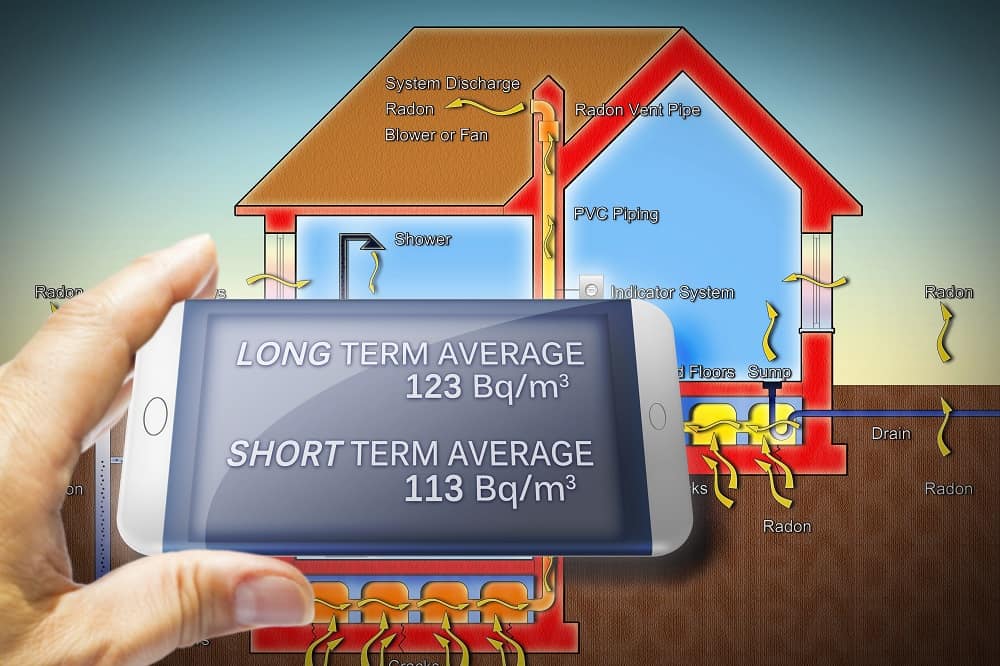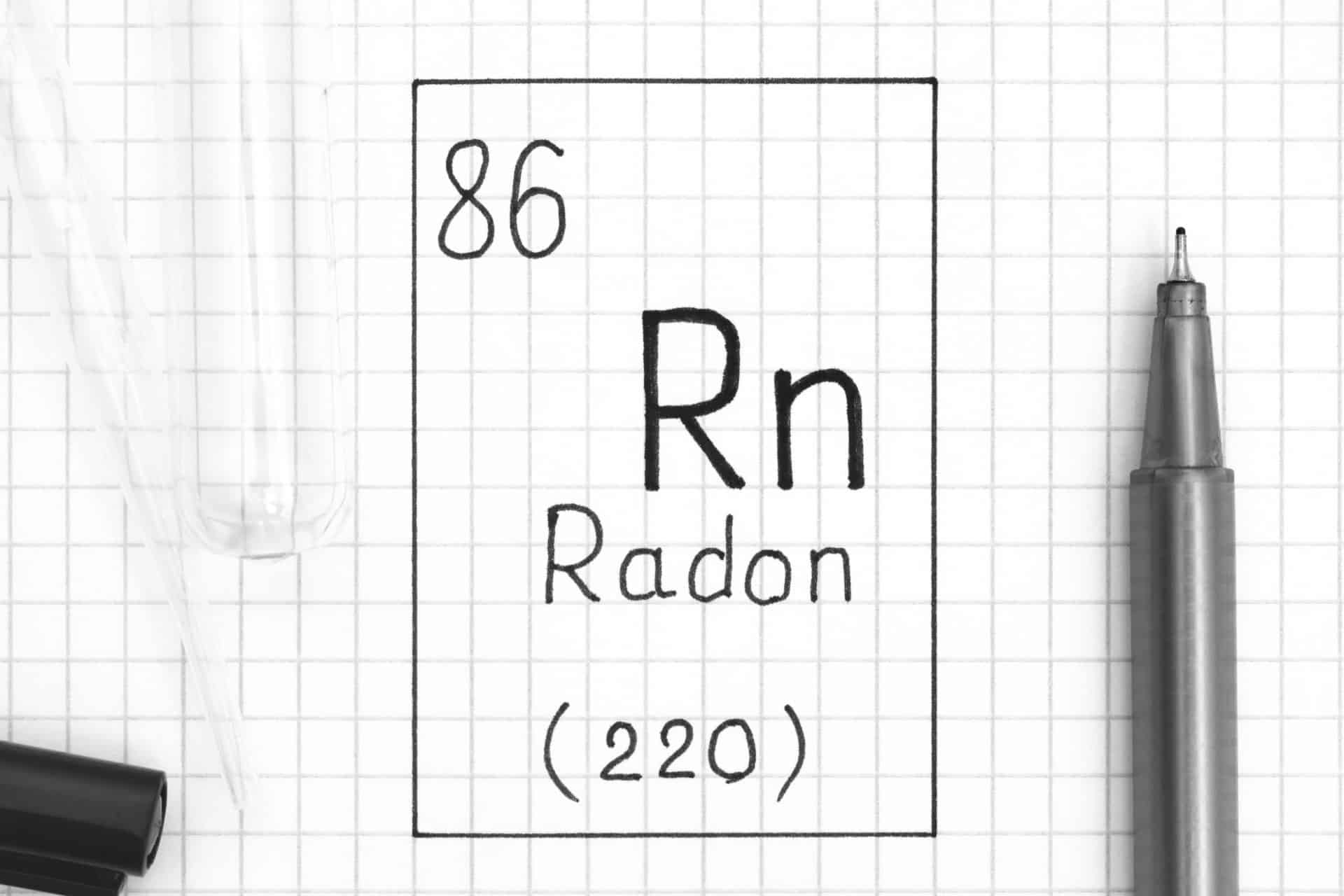
Two Kelowna postcodes have been identified as radon hotspots, while Vernon West, East, and Central all were identified as having higher than healthy readings.
In fact, two homes in Vernon came back with readings measuring 5-7 times higher than the current Canadian guideline.
Radon is a colourless and odourless gas that forms naturally when radioactive metals break down in the earth. It’s known to cause cancer.
You can read more about radon on our website.

The Canadian Government recently reduced the guideline from 800 Bq/m3 to 200 Bq/m3.
A becquerel is one radioactive disintegration per second.
Canadian guidelines are higher than both the WHO and US EPA guidelines. WHO recommends taking action at 100 Bq/m3, while the EPA recommends acting at levels of 150 Bq/m3 or higher.
There is no safe radon level.
Radon seeps into your home through any small gaps. Cracks in solid floor and walls, construction joints, wall cavities, and gaps around service pipes are all common culprits for letting in the deadly gas.
It happens because the air pressure inside your home is lower than the pressure in the surrounding soil. The lower pressure draws air – including the air containing radon – into your home.
Radon is the leading cause of lung cancer amongst non-smokers and the second leading cause of lung cancers more broadly.
Breathing in radon gas causes the radioactive particles to enter your lungs. Radioactive decay continues inside your body, damaging the cells in your lungs. These damaged cells increase your risk of developing cancer.
Smoking significantly increases your risk of radon-related cancer.
The Canadian Government cites that lifelong smokers have a 1 in 10 risk of getting lung cancer. But, this increases to a 1 in 3 chance if you add long-term exposure to high levels of radon to the equation.
So, quitting smoking can effectively reduce your risk of developing lung cancer.

Your risk of developing cancer from radon exposure increases with higher levels of radon and if you’re exposed over a long period of time.
Testing your home for radon and reacting quickly to potentially damaging levels can reduce your risk.
You should act quickly to reduce the levels of radon in your home if you find your home has higher levels.
Interior Health recommends active soil depressurization. It's known to be one of the more effective methods for reducing radon levels.
In the short term you should also:
Short term testing can take anywhere from a few days to a few weeks. These tests can expose the need for a longer-term investigation.
Long-term testing takes about 90 days. The longer the test, the more relevant the results.
Interior Health recommends undertaking testing during winter. Also, you should re-test after renovating, making energy-efficient changes to your home or making any changes to your heating and cooling systems. However, in order to properly test for radon gas, find a local professional specializing in radon gas testing.
The only way to know for sure whether your home has high levels of radon is to test for it.
Small wall detectors are used to conduct short-term testing. This might identify the need for long-term testing.
It’s important that testing is undertaken appropriately to ensure your results provide insight as to the danger – if any exists.
C4U Inspections is an authority on radon gas detection. If you want to be certain of your results, it’s best to rely on a specialist.
Contact C4U today to discuss radon testing in your home.
We’re happy to travel to Vernon, the newly identified radon hotspot, to conduct radon testing too.